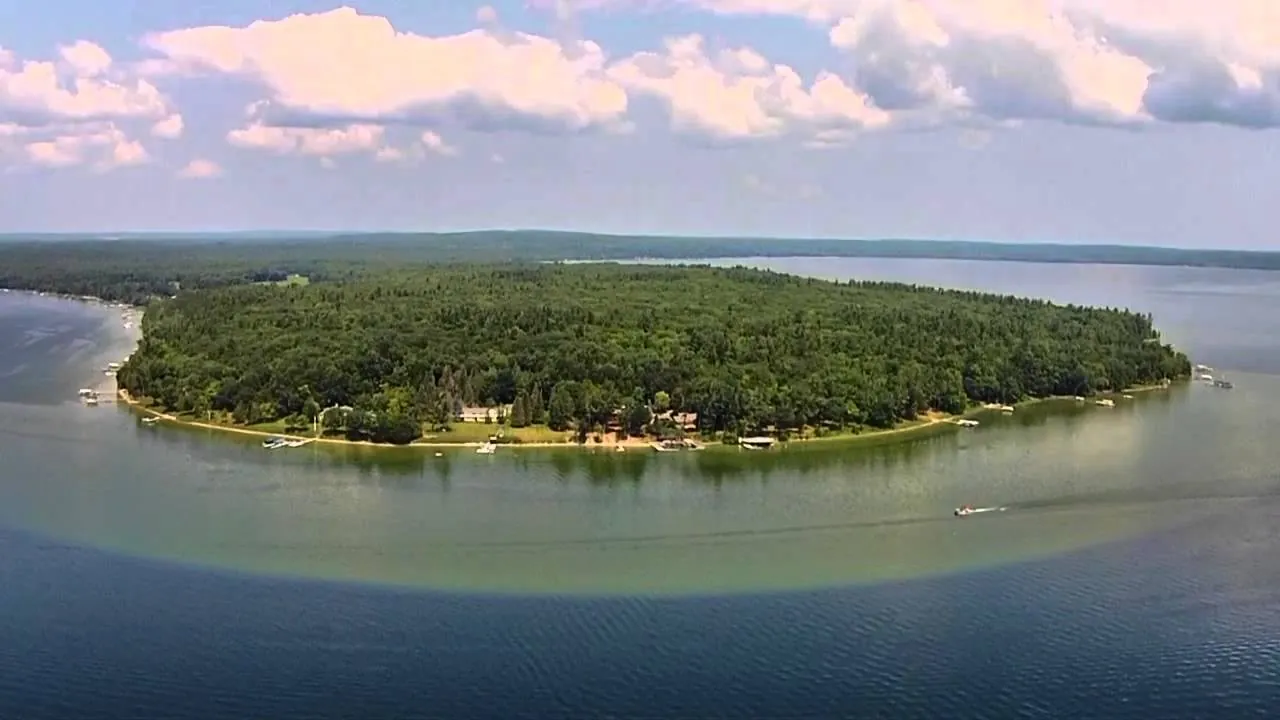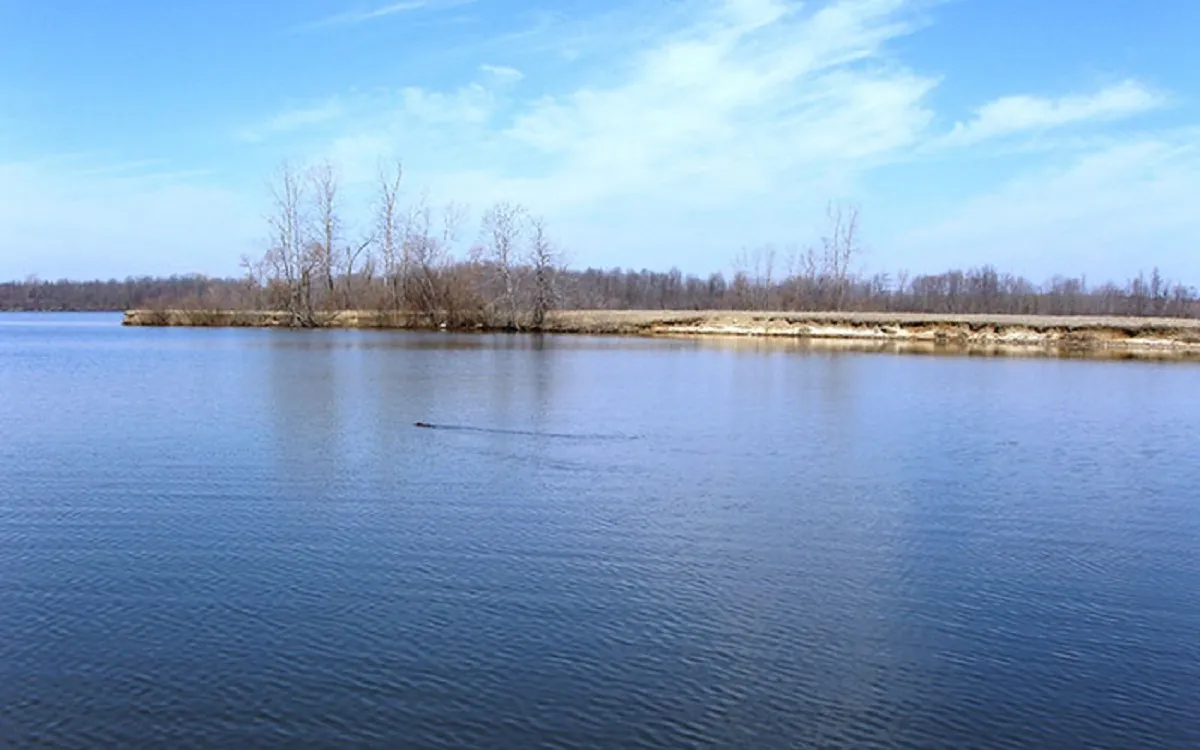Michigan, known for its stunning lakes and picturesque landscapes, is also home to a variety of wildlife, including numerous species of snakes. While most people associate Michigan with the Great Lakes, the state also boasts thousands of inland lakes, many of which provide ideal habitats for these reptiles. Although most snakes found in Michigan are non-venomous and pose little threat to humans, the presence of these creatures can be unsettling for lake visitors. In this article, we will explore the top five most snake-infested lakes in Michigan in 2024, providing detailed information on the snake species found in these areas, the reasons behind their high populations, and tips for staying safe.
Lake Erie Metropark, Wayne County

Overview
Lake Erie Metropark, located in Wayne County, is one of the most popular recreational areas in southeastern Michigan. Spanning over 1,600 acres, the park offers a range of outdoor activities, including boating, fishing, and hiking. However, it’s also known for its high snake population, particularly along the shores of Lake Erie.
Snake Species
Lake Erie Metropark is home to several snake species, with the Eastern Fox Snake (Pantherophis gloydi) being the most common. The Eastern Fox Snake is a large, non-venomous species that can grow up to six feet in length. It is often mistaken for the venomous Eastern Massasauga Rattlesnake due to its similar coloration and pattern. Other species found in the area include the Northern Water Snake (Nerodia sipedon) and the Eastern Garter Snake (Thamnophis sirtalis).
Reasons for High Snake Population
The high snake population in Lake Erie Metropark can be attributed to the park’s diverse habitats, which include wetlands, marshes, and woodlands. These environments provide ample food sources, such as rodents, amphibians, and fish, which attract snakes. Additionally, the park’s proximity to Lake Erie offers a steady supply of water, further supporting the snake population.
Safety Tips
Visitors to Lake Erie Metropark are advised to stay on designated trails and avoid venturing into dense vegetation where snakes are more likely to be found. Wearing long pants and boots can provide additional protection, and it is important to remain calm and slowly back away if a snake is encountered.
Silver Lake State Park, Oceana County

Overview
Silver Lake State Park, located in Oceana County, is a popular destination for outdoor enthusiasts, offering activities such as off-roading, camping, and swimming. The park is situated along the shores of Silver Lake, a 690-acre inland lake that is known for its sandy beaches and clear waters. However, the lake and surrounding dunes are also home to a significant number of snakes.
Snake Species
The most common snake species found in Silver Lake State Park is the Eastern Hognose Snake (Heterodon platirhinos). This non-venomous snake is easily recognized by its upturned snout and its tendency to play dead when threatened. Other species that inhabit the area include the Eastern Garter Snake, the Northern Water Snake, and the Smooth Green Snake (Opheodrys vernalis).
Reasons for High Snake Population
Silver Lake State Park’s diverse ecosystems, which include sand dunes, forests, and wetlands, provide ideal habitats for snakes. The park’s warm, sandy dunes are particularly attractive to the Eastern Hognose Snake, which prefers open, sandy areas for burrowing. The abundance of small prey, such as frogs, toads, and insects, also supports a thriving snake population.
Safety Tips
When visiting Silver Lake State Park, it is important to be aware of your surroundings, especially when hiking through sand dunes or grassy areas. Avoid disturbing or attempting to handle any snakes you may encounter, as this can provoke defensive behavior. Keep a safe distance and allow the snake to move away on its own.
Burt Lake, Cheboygan County

Overview
Burt Lake, located in Cheboygan County, is part of the Inland Waterway, a series of interconnected lakes and rivers in northern Michigan. Covering over 17,000 acres, Burt Lake is a popular spot for boating, fishing, and camping. However, its shoreline and surrounding wetlands are also known to harbor a large population of snakes.
Snake Species
Burt Lake is home to several snake species, with the Northern Water Snake being the most prevalent. This non-venomous snake is often found near water and is known for its aggressive behavior when threatened. Other species found around Burt Lake include the Eastern Garter Snake, the Red-bellied Snake (Storeria occipitomaculata), and the Eastern Milk Snake (Lampropeltis triangulum).
Reasons for High Snake Population
The high snake population around Burt Lake can be attributed to the extensive wetlands and marshes that surround the lake. These areas provide ample food and shelter for snakes, making it an ideal habitat. Additionally, the lake’s abundant fish and amphibian populations offer a reliable food source for aquatic and semi-aquatic snake species.
Safety Tips
To avoid snake encounters at Burt Lake, stick to well-traveled paths and avoid walking through tall grass or wetland areas. If you plan to swim or fish in the lake, be cautious when entering the water, as snakes may be present near the shoreline. It is also advisable to keep your campsite clean and free of food scraps, as this can attract rodents and, consequently, snakes.
Lake Hudson Recreation Area, Lenawee County

Overview
Lake Hudson Recreation Area, located in Lenawee County, is a popular destination for anglers, campers, and nature enthusiasts. The park encompasses over 2,700 acres, including the 502-acre Lake Hudson. While the area is known for its dark skies and excellent stargazing opportunities, it is also home to a variety of wildlife, including a significant number of snakes.
Snake Species
Lake Hudson is home to the Eastern Massasauga Rattlesnake (Sistrurus catenatus), Michigan’s only venomous snake. Although sightings are rare, this species is present in the park and is considered threatened, making it a protected species. In addition to the Eastern Massasauga, other snakes commonly found in the area include the Eastern Garter Snake, the Northern Water Snake, and the Brown Snake (Storeria dekayi).
Reasons for High Snake Population
The diverse habitats found within Lake Hudson Recreation Area, including forests, grasslands, and wetlands, support a variety of snake species. The Eastern Massasauga Rattlesnake, in particular, is attracted to the park’s wetland areas, which provide the ideal conditions for hunting and hibernation. The presence of small mammals, such as mice and voles, also contributes to the high snake population.
Safety Tips
Visitors to Lake Hudson Recreation Area should be aware of the potential presence of venomous snakes, particularly the Eastern Massasauga. It is important to stay on marked trails and avoid walking through dense vegetation. If you encounter a snake, do not attempt to handle it, and give it plenty of space to move away. In the event of a snake bite, seek medical attention immediately, as the venom of the Eastern Massasauga can be dangerous.
Big Bear Lake, Otsego County

Overview
Big Bear Lake, located in Otsego County, is a popular destination for fishing, swimming, and camping. The 350-acre lake is surrounded by forested areas and wetlands, making it a picturesque spot for outdoor activities. However, the lake and its surroundings are also known to be home to a considerable number of snakes.
Snake Species
The most common snake species found around Big Bear Lake is the Northern Water Snake. This non-venomous species is often seen basking on rocks or swimming near the shore. Other snakes that inhabit the area include the Eastern Garter Snake, the Eastern Milk Snake, and the Smooth Green Snake.
Reasons for High Snake Population
Big Bear Lake’s high snake population can be attributed to the lake’s abundant fish and amphibian populations, which provide a steady food source for the area’s snakes. The surrounding wetlands and forests also offer ample shelter and nesting sites, making it an ideal habitat for a variety of snake species.
Safety Tips
When visiting Big Bear Lake, be cautious when exploring the shoreline or wading in the water, as snakes are often found in these areas. It is also important to be aware of your surroundings when hiking through the nearby forests, as snakes may be hiding in leaf litter or under rocks. If you encounter a snake, remain calm and give it plenty of space to move away.
Conclusion
While the presence of snakes in Michigan’s lakes may be unsettling for some, it is important to remember that these reptiles play a crucial role in the state’s ecosystems. Most snakes in Michigan are non-venomous and pose little threat to humans, but it is still important to exercise caution and respect their space. By staying informed about the snake species found in these areas and following safety guidelines, you can enjoy Michigan’s beautiful lakes while minimizing the risk of snake encounters.
Whether you’re planning a trip to Lake Erie Metropark, Silver Lake State Park, Burt Lake, Lake Hudson Recreation Area, or Big Bear Lake, being aware of the local wildlife will help you have a safe and enjoyable experience. Remember, snakes are a natural part of Michigan’s environment, and by respecting their habitats, we can coexist peacefully with these fascinating creatures.
This Article Includes





